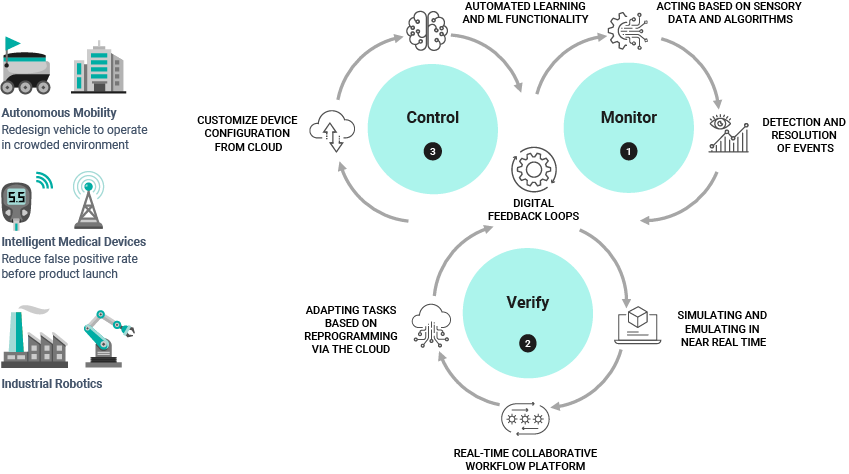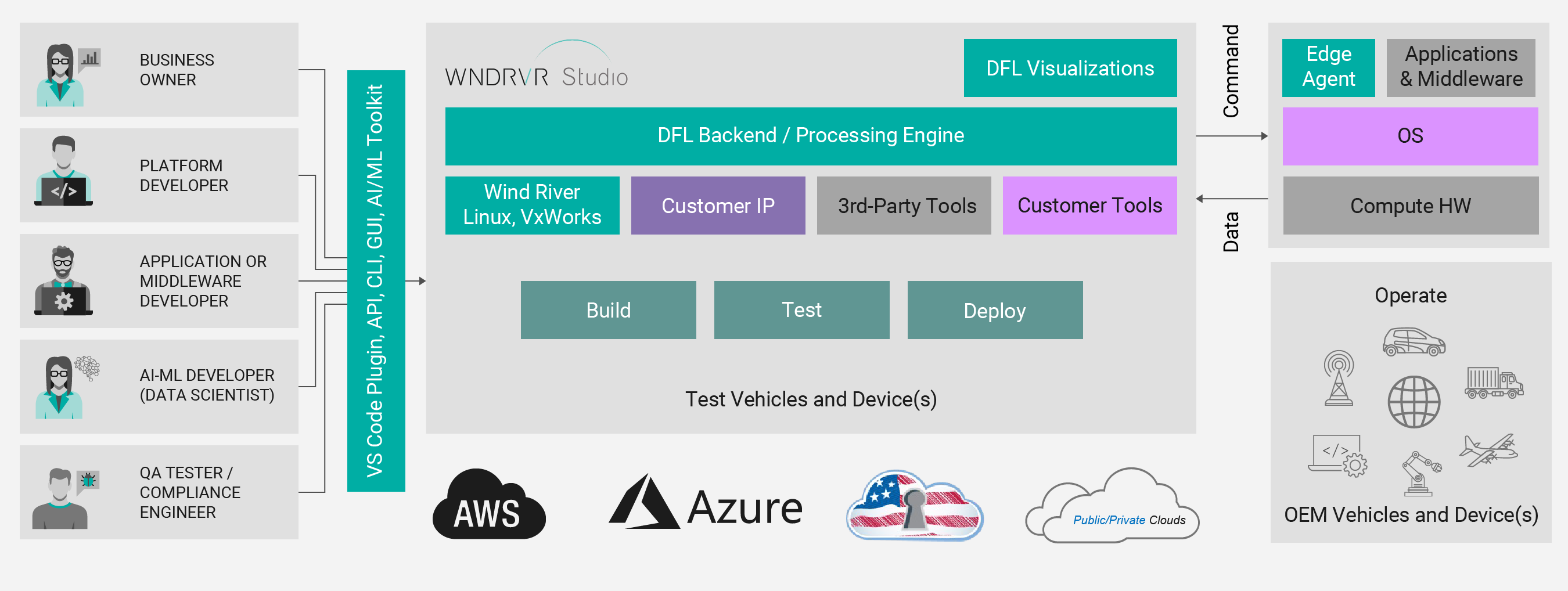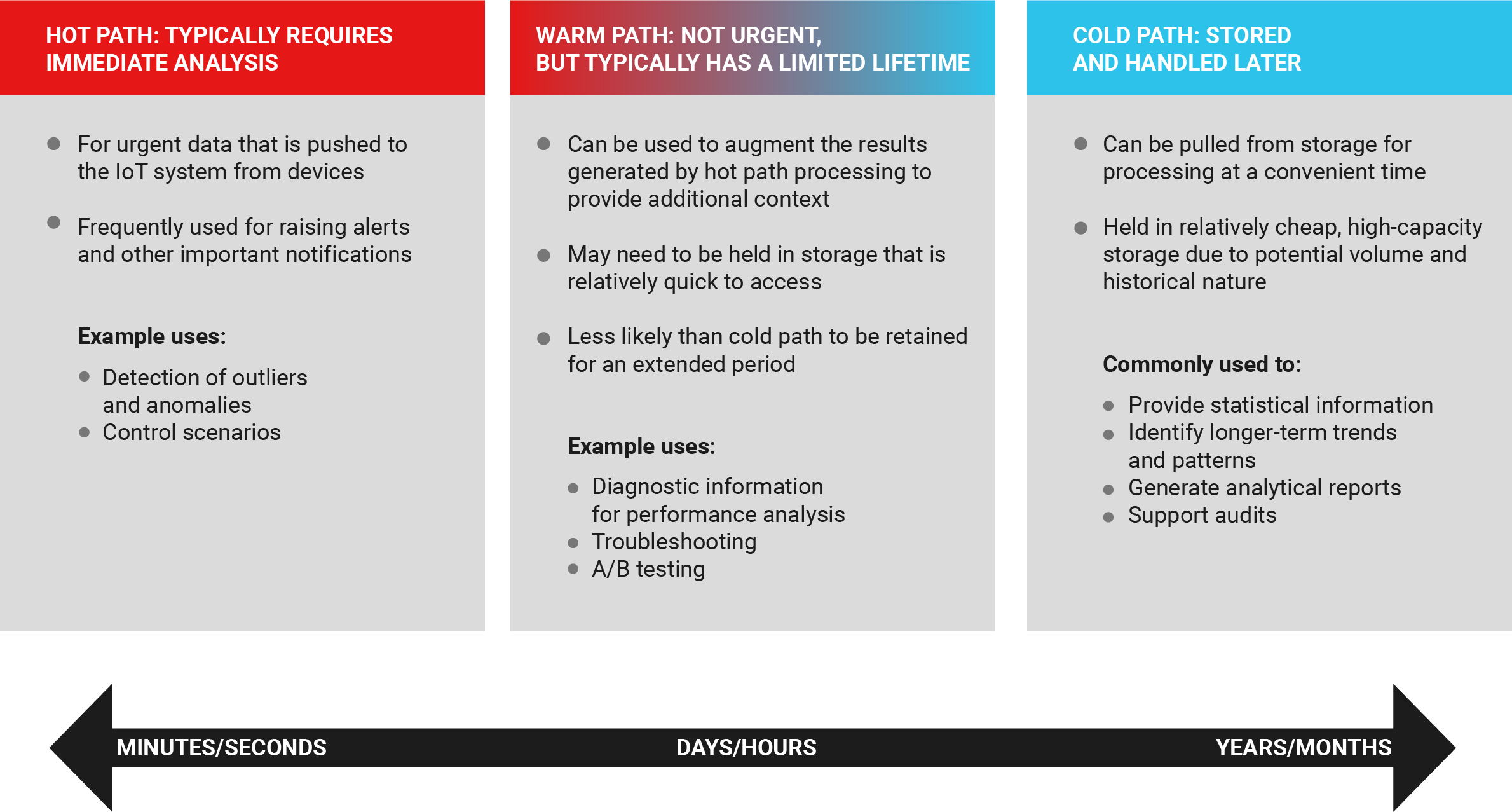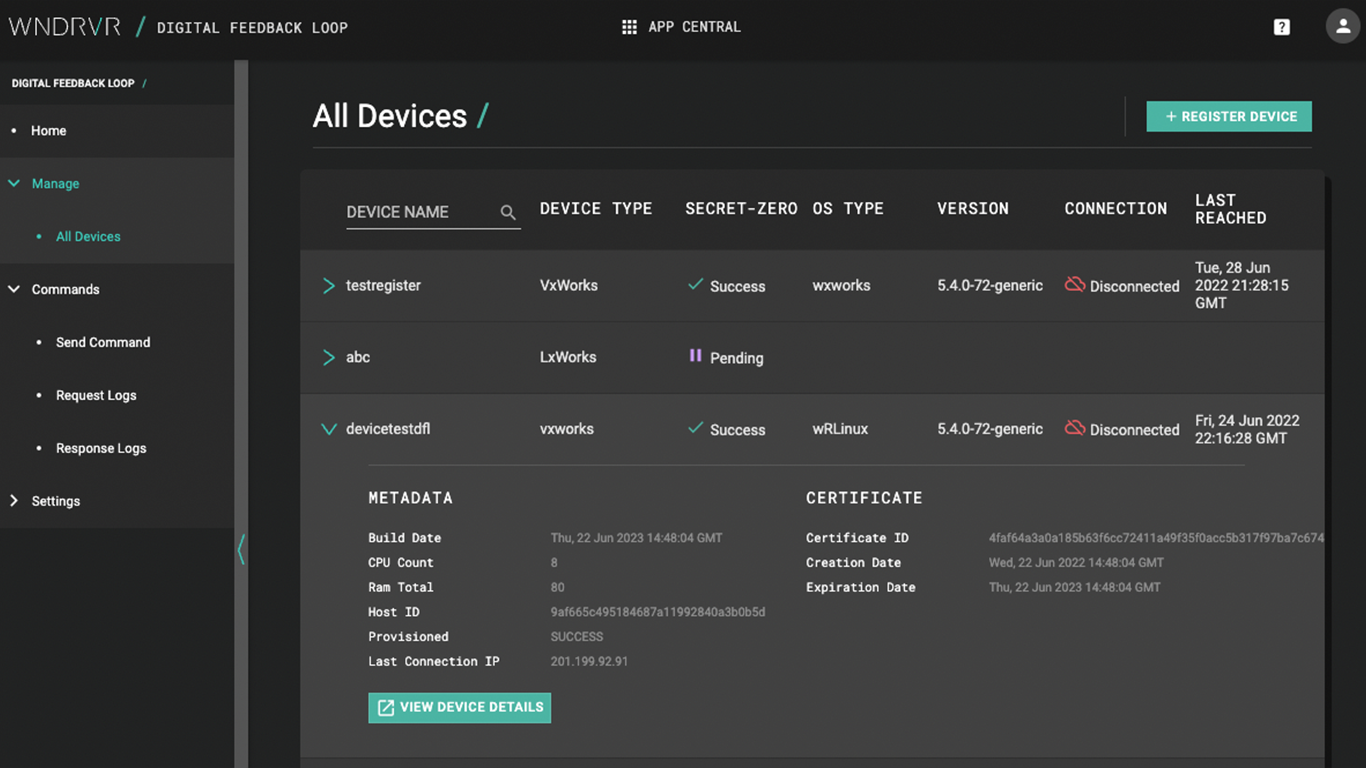WIND RIVER STUDIO TOOLS:
Digital Feedback Loop
Gain real-time analytics and insights from combined OS-level and application-specific data to make data-driven decisions and optimize health, performance, and maintenance of assets deployed at the edge.
Digital feedback loop (DFL) provides rapid feedback on performance of systems and applications operating at the intelligent edge.
Define, embed, and share data including telemetry, logs, images, and events from edge devices at scale. Collect and integrate metadata and telemetry data from deployed systems to provide curated real-time insights to optimize performance, features, and user behavior across these systems. Wind River’s tools close the feedback loop with a role-based command console to trigger manual or automated responses such as device reboot, power-cycle, configuration update, or switching operating modes.
Wind River Studio Digital Feedback Loop Solutions
DFL Edge Agent (SDK)
Provides a lightweight, platform-agnostic solution to securely connect IoT endpoints during development or operations to a Studio cloud provider of choice. Deployed via the Studio Linux or VxWorks® Build System in the applications and middleware, the DFL Edge Agent enables secure bidirectional connectivity between the device and Studio cloud. Offers both flexibility and simplicity in accessing OS telemetry as well as device-specific data types and custom commands.
Device Management
Provides a scalable framework for the end-to-end management of devices over their lifecycles, from secure enlistment to metadata registration, remotely accessing the device state in real time; and a role-based command console to troubleshoot and manage the devices, both individually and collectively as a fleet.
Real-Time System Analytics
Extends the security hardening of Studio to provide a single pane of glass across the lifecycle of critical embedded workflows. Use early insights from data during development to identify and solve problems before releasing applications. During operation, use machine data to explore customer and device behavior and manage maintenance risks and costs. Configure and auto-send alerts when an anomaly is detected, such as CPU resource utilization exceeding a threshold.
Data Management
Provides built-in support for flexible schemas, a network-efficient communication protocol for data packet management, security for data at rest and in transit, a scalable data pipeline for real-time processing, and REST APIs for integration with analytics and business intelligence tools.
Digital Twin (Powered by Wind River Simics®)
Provides use of DFL in conjunction with a virtual "simulated" machine or system to maintain a persistent record of machine state (irrespective of connectivity) and model machine state through simulation. Explore “what if” scenarios in a virtual environment before working on real hardware – with geographically dispersed teams anywhere in the world.
Learn More »Development and Integration
Provides a resource and policy manager for granular role-based access control per device and user group. Allows secure storage of device secrets with provisions for remote renewal and revocation, and RESTful APIs for device interactions with complete traceability including request-response logs.
Digital Feedback Loop
See DFL in action with this robotic test bed demonstration.
In this video, Studio captures data from and passes commands to a robot arm prototype. The demo also dashboards hot path CPU usage of the system. The demonstration was designed and executed by Autumn Chadwick, a senior machine learning software engineer at Wind River.
How It Works
The Wind River Studio DFL is designed with flexibility and scalability to support use cases in multiple domains for critical infrastructure.

Digital Feedback Loop use cases
Wind River leverages leading cloud service providers Amazon AWS and Microsoft Azure to build on its deep expertise in security and reliability, delivering a solution that scales with the needs of its customers.

Digital Feedback Loop at cloud scale
DFL provides visibility and actionability that spans timescales from minutes or seconds to years or months. Outliers or anomalies can be detected in real time and addressed or escalated by operations personnel. Data scientists and development teams can gain insights by combining data across a fleet and over time.

Hot, warm, and cold processing paths
Device enlistment and management
DFL supports multiple approaches for provisioning and securely managing devices, to scale from small numbers of individual, engineered-to-order systems to large volumes of manufactured devices.
Scalability and performance
The DFL edge agent is designed to minimize footprint on resource-constrained edge devices while providing unparalleled visibility into device operation and performance in the field.
Flexibility and configurability
DFL enables developers to choose the fidelity and granularity of data to be shared with an intelligent edge cloud, select types of data to share (metadata, OS or application telemetry, events, complex data types), and specify the commands the device will recognize and respond to.
Digital Feedback Loop Ecosystem Partners
Query, visualize, alert on, and understand your data no matter where it’s stored. With Grafana you can create, explore, and share all of your data through beautiful, flexible dashboards.
Learn More »Qlik closes the gaps between data, insights, and action with the only cloud analytics platform built for active intelligence. Make your data and analytics AI-driven, collaborative, and actionable.
Learn More »Tableau can help anyone see and understand their data. Connect to DFL telemetry data, drag and drop to create visualizations, and share with a click.
Learn More »Wind River Studio Digital Feedback Loop FAQs
Resources
Product Information


